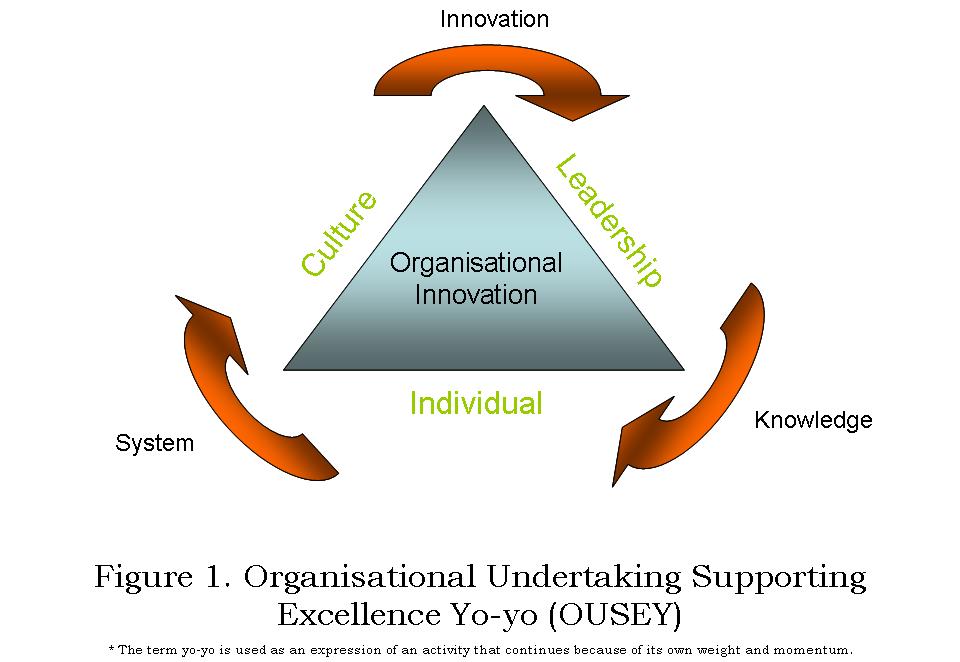Hack:
In'ooh'vate or in'no'vate - enabling innovation in large organisations
A successful organisation should have the base ingredients for innovation – intelligent, energetic and motivated people. The organisation then has a choice, empower or constrain. The type of person I’m referring to will know more about your organisation than you do. They are not constrained by your paradigms and importantly, they can see what is missing. I recall taking over a business unit and being surprised at how overgrown the grounds were. The unit was responsible, among other things, for the inculcation and acculturation of new people to the organisation and professionalism was one of our values. The good people employed in the unit had not noticed because the weeds, a poignant metaphor for our organisational constraints, were insidious. We normalise the abnormal. Organisations must exploit the freedom from constraints of the newest members.
‘Start with a cage containing five apes…
In the cage, hang a banana on a piece of string and put stairs under it. Before long, an ape will go to the stairs and start to climb towards the banana. As soon as he touches the stairs, spray all the apes with cold water. After a while, another ape makes an attempt with the same result – all the apes are sprayed with cold water. This continues through several more attempts.
Pretty soon, when another ape tries to climb the stairs, the other apes all try to prevent it. Now turn off the cold water. Remove one ape from the cage and replace it with a new one. The new ape sees the banana and wants to climb the stairs. To his horror, all of the apes attack him. After another attempt and attack, he knows that if he tries to climb the stairs, he will be assaulted.
Next, remove another of the five original apes and replace it with a new ape. The newcomer goes to the stairs and is attacked. The previous newcomer takes part in the punishment with enthusiasm. Again replace a third ape with a new one. The new one makes to the stairs and is attacked as well. Tow of the four apes that beat him have no idea why they were not permitted to climb the stairs, or why they are participating in the beating of the newest ape.
After replacing the fourth and fifth original apes, all the apes that were sprayed with cold water have been replaced. Nevertheless, no ape ever again approaches the stairs. Why not? Because that’s the way they’ve always done it and that’s the way it’s always been around here.
And that is how policy begins…’ (unknown).
The problem is many great, arguably million dollar, ideas do not come to fruition because they are lost in the organisation somewhere between the idea generator and the decision maker.
The choice to innovate or not is often dramatically expressed through the phrase innovate or die. To be truly successful an organisation must bust open the organisational barriers to innovation. Failure can result if the million dollar idea is stopped without full consideration before it gets off the ground. The key to successful innovative practice is to provide every individual within the organisation a vehicle to proactively and constructively develop new ideas. The utilisation of an online application can have a profound impact on innovation.
During a recent case study, I was fortunate enough to view an innovation system being run in a traditional, high-tech organisation with a requirement to maintain the highest levels of process control and safety controls. The approach was very effective and surprisingly simple.
The organisation conducted induction training for every new individual where the strategic plan and innovation’s role in it were explained. Additionally, as part of the programme each individual was required to learn a written communication construct through a practical exercise. The practical exercise was based on innovation and each individual was required to document their idea for improvement.
The organisation runs an online desktop application where innovative ideas can be submitted by any individual at any time. Ideas submitted are managed through a process by a small independent innovation oversight group. The result of the system is that no idea is arbitrarily stopped without full exploration. All ideas are captured in a open system that can be viewed by any member at any time and consequently cannot be dismissed without robust discussion and formal documentation. The throw away catch phrase “that’ll never work” is disarmed. While the organisation had a few hundred “ideas” logged in the system and many success stories, one idea alone (introduction of a test set saving $400,000 per unit tested) would have fully funded the system for ten years. The poignant point, highlighting the power of the online application, with reference to the example is that it was initiated on the shop floor.
The introduction of a simple innovation support system can have a profound impact on an organisation's innovative practice.
The introduction of a formalised innovation system empowers individuals to innovate and allows the organisation to “see the woods for the trees”. The online application is introduced during induction training and all individuals who are new to the organisation are taught how to operate it. The system has a self-fulfilling effect. Innovation breeds innovation. A culture of “no idea is a bad idea” quickly develops, and as the system is open members begin corroborating in relay fashion to create innovative solutions to existing problems or introduce new ideas. There is no initial gate or filtering mechanism at department level and therefore individuals are free to commit their idea to the system. No idea is prematurely terminated.
How do you truly enable innovation - keep it simple stupid. I consider there are two primary enablers – leadership and the provision of knowledge to empower the individual, and operation of an innovation support system (impartial oversight group and online application). See figure 1.




You need to register in order to submit a comment.